Japanese Animation
This week we will look at Japanese animation. We will look at the relationship between manga and anime, and at how the traditional Japanese art influenced both of these media. We will examine the themes and iconography of anime and at how audiences developed for this form. We will see the development of some of the animation studios that have been dominant in Anime.
Jump to the different sections with the links below:
Influence of traditional art / Manga and Anime / Osamu Tezuka / Anime themes and iconography / Toei Animation / Studio Ghibli / Anime and Western audiences / Assignment
Influence of traditional Japanese art
We can see in traditional Japanese art many of the themes explored in anime and in manga. From the 10th century on, illustrated scrolls telling many different types of stories were created in Japan. Some had religious themes, some were depictions of historical events, many types of stories were told. These scrolls combined words and images and can be seen as predecessors to manga. A deep reverence for the natural world is demonstrated in these works.
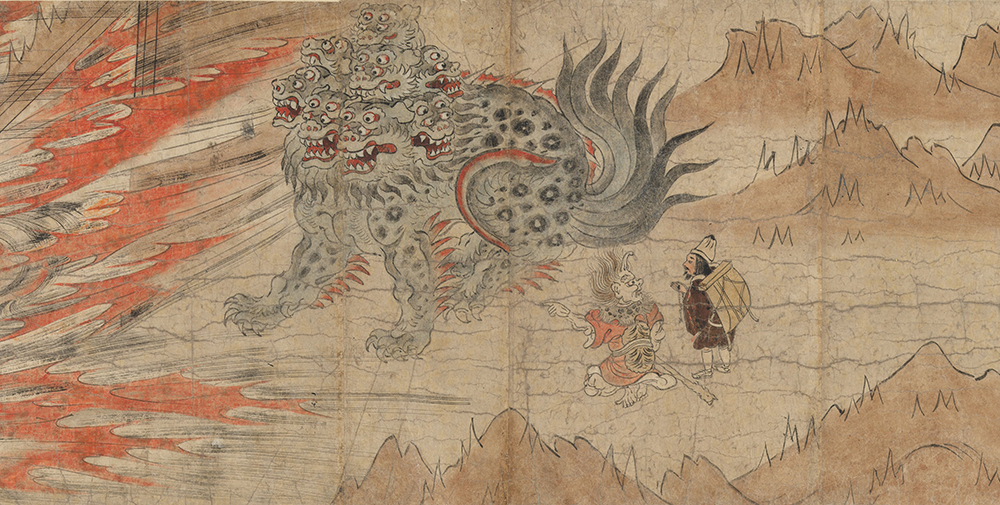
Woodblock prints were first seen primarily with Buddhist texts starting in the 8th century. Woodblock prints were used to make books with Buddhist images and texts around the 11th century. These works were expensive to produce and therefore rare. During the Edo period (1603-1867) woodblock prints were mass produced. Ukiyo-e prints, translated as “pictures of the floating world”, were popular from the 17th to 19th century. These prints have a wide range of subject matter, including actors from the Kabuki theater, sumo wrestlers, folktales, nature, history, erotica and more.
“Continuing from other longstanding Japanese art traditions, nature became a prominent theme in ukiyo-e prints in the 19th century. Mountains, forests, fields, oceans abound; artists peer closely at the details of moonlight through cedar leaves, cherry blossoms in bloom, a snow-covered bridge. Woodblock prints were circulated as tourist images – the 19th century equivalent of travel magazines or scrolling through Instagram. For many common people who couldn’t afford to travel, they were a form of vicarious tourism, presenting famous sights, cities, and landmarks. But the prints balanced beauty and authenticity, with many artists seeking to capture the realities of nature and everyday life, like a tree bent by the wind or a lonely figure getting caught in a rainstorm. The sharp perspective paired with a heightened level of sensory detail that can still prompt visceral feelings – and a desire to travel – today.” (from “Five Views of Ukiyo-e” Japan House https://www.japanhousela.com/articles/five-views-of-ukiyoe/ Retrieved June 2021)
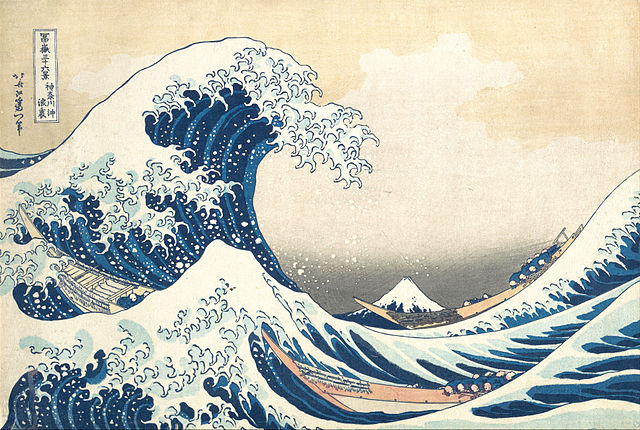
Manga and Anime
We saw that there is a relationship in the early history of animation between comics and animation. In Japan, there is a relationship between Japanese comics, or manga and Japanese animation, or anime. Many artists have worked in both genres, and a lot of anime content first appeared in print in manga series.
“Of all the unique art forms Japan has given to global pop culture, perhaps the most instantly recognizable is manga, and its “moving image” counterpart, anime. Characters like Astro Boy, Speed Racer, and Sailor Moon have become as ubiquitous as Mickey Mouse, adorning backpacks, toys, and lunchboxes worldwide. The pioneering cyberpunk visions of “Akira” and “Ghost in the Shell” shaped global science fiction, and past Academy Awards for anime director Hayao Miyazaki show that “cartoons” can be embraced as “high art”. JAPAN HOUSE Los Angeles hosted “This is Manga”, the first North American exhibition of the influential manga artist Naoki Urasawa, which drew wide audiences and fans from students to major Hollywood directors. So how did manga evolve into an international phenomenon?
To clarify terms, “manga” is the umbrella term for comics, cartoons, and animation. It’s comprised of two kanji: (漫) “man” for “whimsical or impromptu” and (画) “ga” for “pictures”. But today and especially outside of Japan, “manga” is used specifically for printed comic books, while “anime” refers to animated motion pictures – be those film, TV, or web videos. Often, popular manga are adapted into anime or launched in parallel as a comprehensive franchise, so the terms are sometimes used interchangeably.
Many scholars trace manga’s roots back through Japanese art history, such as 12th century scroll painting (“emaki”), which told stories in a right-to-left sequential tableau, and 18th century “ukiyo-e” woodblock prints, which were mass-produced for the public and combined illustration and text for dynamic effect. The book “Shiji no Yukikai (Four Seasons)”, published in 1798, was the first to use the term manga, and by the late 1800s, there were several comic magazines in circulation. A major turning point came with the US Army’s occupation of Japan starting in 1945, which introduced American comics and cartoons. Japan’s post-War youth generation absorbed and adapted these influences, among them Osamu Tezuka, now known as the “godfather” of manga, who premiered his character “Astro Boy” in 1951. Often compared to Walt Disney, Tezuka helped to shape the industry through his prolific output and stylistic innovations that soon became standard, like wide-eyed characters and cinematic visual techniques. Early on, he directly adapted the Disney animated films “Bambi” (1951) and “Pinocchio” (1952) to manga form. Later, in manga and anime, he created everything from light-hearted children’s fare to treatments of more adult, ambitious themes, such as his 14-volume life of the Buddha (“Buddha”, serialized from 1972-1983). “(from “Drawn to Inspire | The Impact of Manga and Anime” Japan House https://www.japanhousela.com/articles/the-impact-of-manga-and-anime/ Retrieved June 2021)
Anime themes and iconography
Visual Symbols
Anime and manga have a common visual language with many characteristics that express the mood and the emotion of the character. Here are a few commonly used icons and symbols and what they represent.
Speed lines
Speed lines are lines that appear in the background or over a character to denote speed. Speed lines are more common in older anime than in modern anime. Speed lines are used to keep the feel of reading a manga or simply keep the animation budget down. In modern anime, where action is expected to be crisply animated, speed lines are used for comedic effect or to accent an intense action sequence.Speed lines are common in American comics as well. They are simply a good way to convey motion in a motionless media.
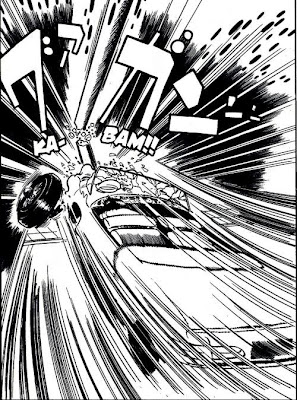
Abstract Background Patterns
Sometimes in scenes the background abruptly switches to an abstract background. This swap is used to emphasize what the character is feeling. Often the background is composed of symbols from our list above. Swirls are used when a character is confused or overwhelmed. Speed lines are used to show the character’s energetic mood. Backgrounds vary based on context. Most of the time, they are easily understandable.
Sometimes these backgrounds are animated to further show what the characters are thinking or feeling. Fast animations or twirling spirals show how quickly the character’s mind is working, much like gears in a clock. Wavy lines show irritation or upset emotions. Colors such as bright red are used for anger. Darker colors like purples or blues are used to show the characters are feeling sick, upset, or depressed. Background swaps are usually abrupt.
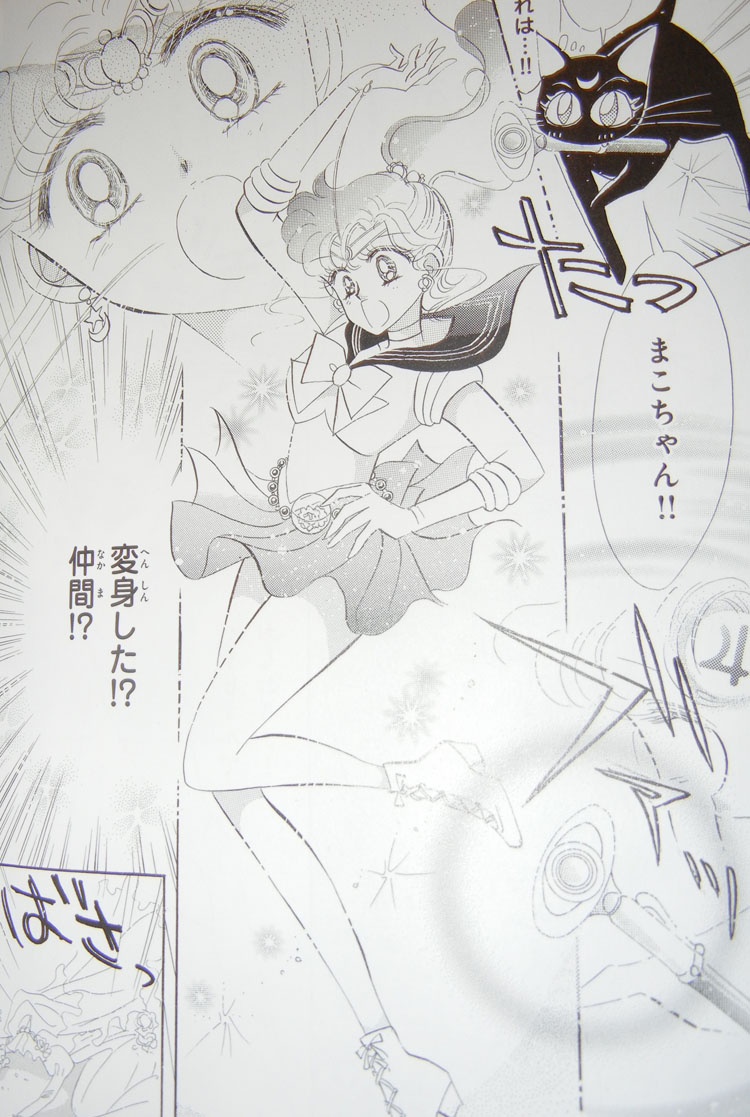
Eye Symbols
The eyes in manga and anime are used to convey a wide range of thoughts and emotions. Eyes have gotten larger since the 80’s and allow artists to show emotions clearly…if you know the icongraphy. Most tend to be obvious from reality. People’s eyes lift up into arcs when they are happy and fall downward when sad. Pupils constrict and eyes widen when we are scared. In anime these subtle queues are exaggerated. The slight upward or downward arc becomes a complete arc. Constricted pupils and widened eyes become enormous eyes with tiny dots for pupils. Some symbols are not so obvious, however. X’ed eyes or spiral eyes are used to show dread, illness, and confusion. Sometimes the eyes completely disappear when a character bows their head in sadness or depression. The eyes are replaced with vertical lines and blue or purple colors to show depression or sadness. Eyes with sparkles and white dots are cute. Often they are flashed to help a character get their way. Think Puss-in-Boots from Shrek. (from Kincaid, Chris. “Anime’s Visual Language” Japan Powered. https://www.japanpowered.com/japan-culture/animes-visual-language Feb. 12, 2011. Retrieved July 2021)

Sparking a Rivalry
Why do characters shoot laser beams from their eyes at each other? In English, we have an idiom—sparking a rivalry—that anime takes literally. Characters’ aren’t actually shooting lasers, except in some comedies. Rather, this represents their animosity for each other. Their gazes fight with each other. This image makes sense. We’ve seen people stare daggers at each other (another idiom) when they dislike each other.
Popping Vein
Perhaps one of the most seen visual symbol in anime, the Popping Vein is a series of four U-shapes combined to create a cruciform. They appear over hair, foreheads, and sometimes hands. The Popping Vein has only one emotion: anger. It comes from how some people have veins that pop out in their temples when they are angry or their blood pressure rises. Manga uses the four-U shapes as minimal shorthand for this biological effect.

Sweat Drops
Another common symbol in anime, the sweat drop—a large droplet of blue over a character’s hair or face—shows embarrassment or anxiety or confusion. Context determines which of the three. Sweat drops combine with blush lines (lines of red color below the eyes) and with popping veins to help clarify the character’s feelings. Sweat drops and popping veins show anxious or confused anger. However, most of the time, embarrassment and anxiety combine. The size and number of sweat drops shows the level of the feeling. Large drops mean the feeling is overwhelming.

Cat Mouth
Usually you’ll see this with female characters. It is a visual play on the idiom ‘She’s being catty today.’ Catty characters are feeling mischievous. The cat mouth usually combines with dialogue or actions that invoke a sweat drop or some other anxious reaction in another character. Sometimes the cat mouth will appear when a female character is feeling sexually aroused and is acting catty about it, much to the distress of others.

Nose Bubble
Japanese anime are frequently using nose bubbles when a character has fallen asleep. They are the equivalent of the ZZzzZZ sleep symbol. It’s not an exclusively Japanese sign, and the trope is found in many western animations as well. While a character sleeps, the nose bubble will bob, and it will bust when the character wakes. I’m not sure I’d like to see the real-life inspiration for this one.

The Nose Bleed
The Nose Bleed is the most notorious and confusing symbol. Anime characters seem to spout blood at random, but their spurts are far from random. They represent sexual arousal. As blood rushes to…certain body parts…potential censorship ensured that a way had to be found to represent this arousal in a way that is not directly related to sexual images. Anime focuses on the face, so the idea of rising blood pressure combined with this to create the nosebleed. Manga writers used the effect for comedy—giant fountains of blood erupt from horny guys while girls suffer the embarrassment of trying to hide theirs. Embarrassment underpins much of anime’s humor.” (from Kincaid, Chris. “Explaining Anime’s Common Visual Symbols and their Meanings”. https://manga.tokyo/columns/explaining-animes-common-visual-symbols-and-their-meanings/ Retrieved July 2021)
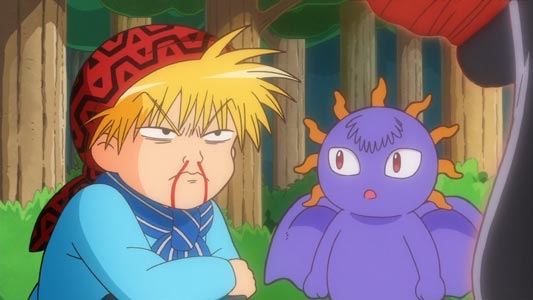
Anime Genres
There are many forms in anime, each aimed at a particular audience. The audiences for manga are generally defined with the same terms.While these genres are defined, it’s important to remember that there is a lot of blurring of the content in these themes. Other popular themes in anime and manga, include horror, sports, magic, fantasy, slice of life and science fiction. There are also many sub-genres, such as magical girl.Here are a few of the most common genres, this is a short overview.
Shonen: aimed at boys, up to high school age. Well known examples are Dragon Ball and Naruto. Often with a young boy protagonist, sometimes involves fighting.
Shojo: translated as young girl. Usually has a female lead character and often focus on interpersonal relationships, examples include Sailor Moon.
Kodomo: anime for young children, sometimes with an educational purpose. Doraemon is an example.
Josei: aimed at young women. Often focusses on relationships, with a female protagonist. Paradise Kiss is an example.
Seinen: anime for young men, post high school. Often focuses on action/adventure. Ghost in the Shell and One Punch Man are considered examples of seinen.
Mecha: giant robots. Neon Genesis Evangelion,
Osamu Tezuka
Osamu Tezuka (1928-1989) was a Japanese manga artist and animator. His book Shin Takarajima (New Treasure Island), published in 1946, is credited with starting the golden age of manga in Japan. He created Astro Boy as a manga series, the story of a robot child with human emotions, which was adapted into an animated series for television in 1963. The show was extremely popular in Japan and an English language version was distributed in the US on NBC Enterprises. It was the first Japanese anime to be shown on American television (see week 10).
Tezuka was enormously prolific, creating many characters, with different types of stories and themes and producing over 700 volumes of manga. After working for Toei Animation, he started a production company, Mushi Productions, which produced Astro Boy and many other television series and specials, as well as a number of experimental films and features. Tezuka’s work often has themes of reverence towards the natural world and against war. He is credited with initiating the “large eyes” style of characters in anime, which he based on American animated characters such as Betty Boop and Mickey Mouse.
“Always arrayed in a beret, thick-rimmed glasses, and a smile, Tezuka was an artistic genius who created more than 700 manga titles — comprising 150,000 pages of hand-drawn art — and more than 60 anime in his lifetime, making him one of the most prolific Japanese manga creators in history.
The impact of Tezuka’s career on Japanese culture far exceeds his actual artistry, though his artistry is incredibly influential. But of equal importance is his role in creating the longstanding industry around taking Japanese comics, or manga, developing them into animated Japanese TV series, or anime, and exporting them around the globe.
Tezuka began this work in the late 1960s with his iconic manga Astro Boy, which he adapted into a wildly successful anime. This process of close adaptation, along with the many animation techniques Tezuka pioneered in Japan to speed up the adaptation process, started an industrial tradition that continues into the present; the manga/anime industry, with its distinctive Japanese artistic style and identity, has profoundly shaped Japanese culture.”(from Romano, Aja Vox “Osamu Tezuka was the “Walt Disney of Japan.” His beautiful manga biography shows why”https://www.vox.com/2016/8/2/12244368/osamu-tezuka-story-explained Retrieved June 2021)
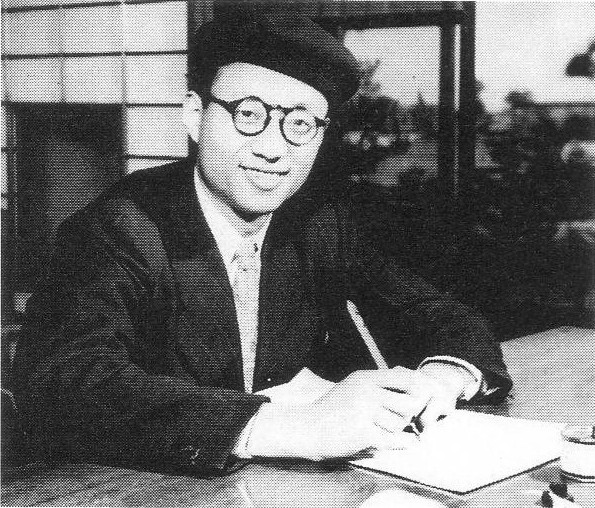
Toei Animation
“The studio was founded by animators Kenzō Masaoka and Zenjirō Yamamoto in 1948 as Japan Animated Films (日本動画映画, Nihon Dōga Eiga, often shortened to 日動映画 (Nichidō Eiga)). In 1956, Toei purchased the studio and it was renamed Toei Doga Co., Ltd. (東映動画株式会社, Tōei Dōga Kabushiki-gaisha, “dōga” is Japanese for “animation”), doing business as Toei Animation Co., Ltd. outside Japan. In 1998, the Japanese name was renamed to Toei Animation. It has created a number of TV series and movies and adapted Japanese comics as animated series, many popular worldwide. Hayao Miyazaki, Isao Takahata, Yasuji Mori, Leiji Matsumoto and Yoichi Kotabe have worked with the company. Toei is a shareholder in the Japanese anime satellite television network Animax with other anime studios and production companies, such as Sunrise, TMS Entertainment and Nihon Ad Systems Inc. The company is headquartered in the Ohizumi Studio in Nerima, Tokyo.” (from “Toei Animation” Wikipedia https://en.wikipedia.org/wiki/Toei_Animation#History Retrieved June 2021)

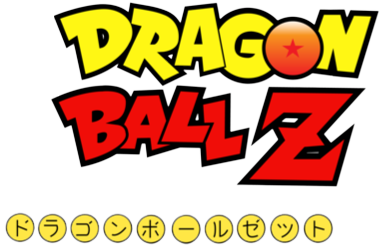
Studio Ghibli
Studio Ghibli, acclaimed Japanese animation film studio that was founded in 1985 by animators and directors Miyazaki Hayao and Takahata Isao and producer Suzuki Toshio. Studio Ghibli is known for the high quality of its filmmaking and its artistry. Its feature films won both critical and popular praise and influenced other animation studios. The headquarters are in Tokyo.” (from “Studio Ghibli” Britannica.com https://www.britannica.com/topic/Studio-Ghibli)
Hayao Miyazaki
Hayao Miyazaki (born 1941) is a Japanese animator, director, author, producer and manga artist. After graduating from Gakushuin University, was employed at Toei Animation doing in-betweens in 1963. In 1968, he was chief animator, scene designer and concept artist on feature film The Great Adventure of Horus, Prince of the Sun, which was directed by Isao Takahata, with whom he was later to launch Studio Ghibli.
In 1971, Miyazaki left Toei to work at A-Pro, where he and Takahata co-directed Lupin the Third Part for television. He worked for other studios primarily on animation series for television. In 1979, he co-wrote and directed his first feature, The Castle of Cagliostro. During the 60s and 70s, he wrote a number of manga series, sometimes using a pseudonym. Nausicaä of the Valley of the Wind, a film based on his manga series of 1982 of the same name, was released on 11 March 1984. This film, produced by Isao Takahata, has many of the themes that characterize Miyazaki’s work; positive portrayal of women, beauty of the natural world, and threats to the environment. Studio Ghibli was created the following year, in 1985.
Laputa: Castle in the Sky (1986) was the first film produced by Studio Ghibli. Miyazaki wrote and directed it. Like many of Miyazaki’s films, it appears to be located in a European landscape.It depicts the adventures of a boy and girl in the 19th century, a magic crystal and a search for a legendary floating castle. The film was distributed in Japan by Toei and was released internationally. My Neighbor Totoro (1988) shows the relationship between humanity and nature. It was not as successful as Castle in the Sky, but has become a cult classic, and the character Totoro is the symbol for Studio Ghibli. My Neighbor Totoro was produced at the same time as Grave of the Fireflies.
Kiki’s Delivery Service (1989) was the highest grossing film in Japan the year it was released by Toei. It tells the struggles of a teenage witch and her cat Jiji. In 1997, an English Language version produced by Walt Disney Pictures was the first film released in a 15 year deal between Disney and Studio Ghibli. Porco Rosso (1992), written and directed by Miyazaki based on one of his manga series (Hikōtei Jidai ), tells the story of an Italian fighter pilot who through a curse has been turned into a pig. Japan Airlines was a major investor in the film which had anti-war themes.
Princess Mononoke (1997), set in a Japanese village, returns to the themes of nature vs. man that were seen in Nausicaä of the Valley of the Wind. The plot centers around a battle of the forest gods and a mining company. Princess Mononoke was primarily created using traditional hand drawn cel animation, but it did use CGI in some sections. It was successful critically and commercially, the highest grossing film in Japan at that time. An English language version with a script by Neil Gaiman was released by Miramax in 1999. It did not do well at the box office, but became popular in the Western market with its DVD and video release.
Production began on Spirited Away (2001) in 2000. Many of the themes in this film are based on traditional Japanese culture and Shinto religion. A 10 year old girl enters a supernatural world in a magical bathhouse after her parents have been turned into pigs. Like Princess Mononoke, this film used a limited amount of CGI. Spirited Away was critically acclaimed and financially successful. It won Best Film in the Japan Academy Awards and it is the only hand drawn non-English film that won Best Animated Feature in the Academy Awards in the US.
Miyazaki’s next film was Howl’s Moving Castle (2004). “The story is set in a fictional kingdom where both magic and early 20th-century technology are prevalent, against the backdrop of a war with another kingdom. ” (from “Howl’s Moving Castle (film)”. Wikipedia. https://en.wikipedia.org/wiki/Howl%27s_Moving_Castle_(film) Retrieved July 2021)
Ponyo (2008) is the story of a fish that escapes from the ocean and is rescued by a girl. This film was aimed at small children. Miyazaki aimed for a simpler style of drawing, and this film, unlike Princess Mononoke and Spirited Away, did not use computer animation.The Wind Rises (2013) tells the story of engineer Jiro Horikoshi, who designed many Japanese fighter planes. It is based on a manga Miyazaki began writing in 2009 of the same name.
Miyazaki has said several times that he is retiring from creating feature films. He announced this again in 2013. He is.currently working on How Do You Live?, which does not have a date for release.
Isao Takahata
Isao Takahata (1935-2018) was a Japanese filmmaker, producer and screenwriter who co-founded Studio Ghibli with Hayao Miyazaki. He worked at Toei animation first as an assistant director on a number of television series and films. In 1968, he was the director of The Great Adventure of Horus, Prince of the Sun, a feature film, on which Miyazaki was key animator. He and Miyazaki left Toei in 1971. They worked together on several television series in the 1970s including Lupin III. Takahata directed the series Heidi, Girl of the Alps (1974), with Miyazaki working on scene design and layout. After Miyazaki’s success with The Castle of Cagliostro, he approached Takahata about starting a studio with Toshio Suzuki and Yasuyoshi Tokuma. Grave of the Fireflies was the first film written and directed by Takahata and animated by Studio Ghibli. It is the story of two children struggling to survive in the last days of World War 2 in Kobe, Japan.
“Grave of the Fireflies is a brutal depiction of the suffering of innocents during wartime that’s enough to make any viewer anti-war, even if its director — who himself survived a U.S. air raid on Okayama city as a child — staunchly insisted it was no anti-war film. It’s the kind of subject matter most viewers would never associate with animation, even though the film followed in the footsteps of Mori Masaki’s 1983 film Barefoot Gen, and was followed by Neon Genesis Evangelion. It’s the sort of film Miyazaki would never make, even though he’s willing to call his work anti-war, and even though he’s also depicted the Japanese wartime experience in film.
In fact, it’s tempting to see Takahata simply as the filmmaker who would dare what Miyazaki wouldn’t. The story behind his second Ghibli film, Only Yesterday, seems to be a case in point. “When Miyazaki was approached about adapting the manga Only Yesterday, he was stumped by its episodic style,” critic David Carter wrote for Indiana University Cinema in 2018. “He handed the project over to Takahata, who grasped on to the idea of making the vignettes of childhood flashbacks and having them revolve around and inform a newly added story about a 27-year-old woman struggling with the direction of her life as she goes to visit a family farm for the summer. Takahata drew on his own searching demeanor and nostalgia he had as a younger man, knowing that no matter the age, everyone looks back on who they were to inform what they want to be.”” (from Maher, John. “The unsung genius of Studio Ghibli’s risk-taking realist, Isao Takahata” Polygon https://www.polygon.com/animation-cartoons/2020/5/28/21272659/studio-ghibli-movies-isao-takahata-grave-of-the-fireflies-princess-kaguya-only-yesterday Retrieved June 2021)
Takahata was the producer on many of the Studio Ghibli features directed by Miyazaki. He was the music director on Kiki’s Delivery Service. He directed a number of other films for Studio Ghibli, including Only Yesterday (1991), Pom Poko (1994) and My Neighbors the Yamadas (1999). The last film he directed was also co-written by Takahata, The Tale of the Princess Kaguya (2013). The story is based on a 10th century Japanese folktale.
Anime and Western audiences
In 1963, Astro Boy was broadcast on American television and had a great following. Speed Racer (Mach GoGoGo) was broadcast on television in the US in 1967 and was also well received and influential. Japanese animation began to be popular in Europe in the 1970s, led by series like Takahata’s Heidi, Girl of the Alps.
A number of space operas anime such as Robotech became popular in the US in the 80s. Nausicaä of the Valley of the Wind was released in Europe during this period, where it received critical acclaim. Akira (1988), which had not been popular in Japan, became a cult hit in the West.
Akira
Akira (1988) is a post-apocalyptic Japanese animated film directed by Katsuhiro Otomo based on his manga of the same name.
“Set in a dystopian 2019, Akira tells the story of Shōtarō Kaneda, a leader of a biker gang whose childhood friend, Tetsuo Shima, acquires incredible telekinetic abilities after a motorcycle accident, eventually threatening an entire military complex amid chaos and rebellion in the sprawling futuristic metropolis of Neo-Tokyo. While most of the character designs and settings were adapted from the manga, the plot differs considerably and does not include much of the last half of the manga. The soundtrack, which draws heavily from traditional Indonesian gamelan as well as Japanese noh music, was composed by Shōji Yamashiro and performed by Geinoh Yamashirogumi.” (from “Akira (1988 film)” Wikipedia https://en.wikipedia.org/wiki/Akira_(1988_film) Retrieved July 2021)
“The audiences who saw the first Godzilla (1954) might have been watching a documentary; after all, the damage by the scaly Big G was no worse than that meted out by B-29s. Three decades on, the apocalypse was still a threat, but also a thrill: a way for a new generation to trample down the old world and build another. In Akira, one of the main characters, a colonel, mourns that, “Gone are the passion and joys of reconstruction.” But destruction is also joyous and passionate. When Akira’s director, Katsuhiro Ôtomo, was asked which book had the greatest impact on him, he nominated H. G. Wells’ War Of The Worlds, in which Martians obliterate 19th century London and the Home Counties. (Ôtomo would beat up Victorian London in a later anime epic, Steamboy.) Akira is full of smashing down and building up — sometimes at the same time — as creation and destruction become part of one great, organic process. Our first sight of Akira’s Neo-Tokyo is a visceral red shape suggesting a heart, lungs or guts. Teen biker gangs rule the streets on huge, phallic motorbikes that blur into neon-coloured speedlines. Armed police battle the rioting unemployed, terrorist gangs adding to the mayhem. And in a super-deluxe nursery, housing a top-secret state project, three withered children await the return of their divine brother. A boy named Akira…
The bikers (the main characters) bomb cars, smash windows and beat each other into pulpy messes, but they’re part of one organism. We see them from a God’s-eye viewpoint passing under mammoth skyscrapers, reduced to white dots, like blood cells, or zooming in aerial battles through Neo-Tokyo’s flooded bowels. At the climax, a boy swells into a fantastic bloated giant that mewls, pukes and excretes its way into oblivion. The film’s high-energy transformations are driven by cosmic forces, hokily explained but brilliantly visualised.
Akira also anticipates the recent evolution of Hollywood comic-book movies. It has the manic violence of The Dark Knight (there’s even a biker gang dressed up as clowns), but the film is closer to Marvel franchises like X-Men and Spider-Man. Akira’s monstrous character Tetsuo is a youngster who finds horrific forces mutating his body. Peter Parker shoots out embarrassing strands of web-goo, but Tetsuo’s whole body engorges into a swelling, seething, liquefying ball of flesh. Akira further foreshadows some of the TV show Heroes, such as the season one set-piece where a radioactive man goes uncontrollably nuclear.” (from “Akira: The Story Behind The Film”. Empire. https://www.empireonline.com/movies/features/story-behind-film-akira/ Retrieved July 2021)
Neon Genesis Evangelion is a mecha anime series directed by Hideki Anno and broadcast on Tokyo TV in 1995-1996. It was released in the US and Europe in VHS format by ADV and became highly popular. Cowboy Bebop (1998), a science fiction anime series was also first broadcast in Japan on Tokyo TV. It was released outside of Japan first in Italy (1998), followed by the US on Cartoon Network (2001) the United Kingdom, Australia and Latin America. Dragon Ball Z, Sailor Moon, and Digimon all had success with Western audiences by the late 1990s.
The worldwide financial and critical success of the features from Studio Ghibli in the 90s and early 2000s, particularly Spirited Away, increased the popularity of anime in the West. Anime aimed at children such as Pokémon, Yu-Gi-Oh!, and Digimon were distributed on American television. In 2006, Crunchyroll was formed in the US, claiming to be the first anime streaming service. During this period, a number of American productions that were influenced by anime emerged, such as Avatar: The Last Airbender, its sequel The Legend of Korra (both Nickelodeon productions) and The Boondocks (Cartoon Networks).
A number of high budget features were created and distributed in the West during this period, including Paprika (2006), This film, written and directed by Satoshi Kon (1953-2010), is a science fiction psychological thriller. It was Kon’s fourth feature film. Sony Pictures released it in the US.
In 2012, Cartoon Network relaunched a block of anime to be broadcast on Adult Swim in the US. This included some of the anime that had been show previously shown and new titles, such as JoJo’s Bizarre Adventure (2012) and Attack on Titan (2013). Currently Western streaming services Netflix and Amazon Prime are increasingly involved in anime production.
Your Name (2016), written and directed by Makoto Shinkai, was a critical and financial success internationally.
“The director, who has made animated features since 2004 (though never on a level close to Your Name), has been tagged by many as “the next Miyazaki,” referring to the Studio Ghibli co-founder and mind behind beloved films such as My Neighbor Totoro and Ponyo. Though both weave traditional Japanese folklore into their work, comparisons of this sort may feed unfair expectations; they’re also somewhat inaccurate. Makoto’s work barely resembles Miyazaki’s fantastical, whimsical works, instead feeling closer to a seishun eiga, or “youth film.”
Though this genre has existed for quite some time, it really blossomed the decade following World War II thanks to so-called “sun tribe” youth movies (these featured teens interested in violence and sex, similar to America’s Rebel Without A Cause). In the decades since, seishun eiga have generally focused on the ups and downs of adolescence, particularly high schoolers. “Seishun eiga offer the sort of clear window into Japan’s national culture, society and psyche that other, more internationally popular, genres don’t. Most Japanese survived high school; relatively few joined yakuza gangs,” the Japan Times film critic Mark Schilling has written. Since these movies can be loaded with cliches and melodrama, the laziest iterations of this style are often deeply formulaic.
Your Name follows the basic beats of seishun eiga, as did pre-release advertising for it. The story centers on the relationship between two teens separated by great distances, and the hurdles they face to reach one another. The intimate details of high-school life likely appealed to many young viewers, and the film’s music comes from the rock band Radwimps, a teen-favorite outfit that gelled perfectly with the story. On top of these conventions, Makoto also adds in some magical realism; as the writer Eimi Ozawa noted in a special edition of the magazine EyesCream last October, Makoto was inspired by the author Haruki Murakami, whose work tends to explore the connections that happen in dreams.” (from St. Michel, Patrick. “How Your Name Became Japan’s Biggest Movie in Years”. The Atlantic https://www.theatlantic.com/entertainment/archive/2017/04/how-your-name-became-japans-biggest-movie-in-years/522279/ Retrieved July 2021)
Problems in the Anime Industry
“Anime is almost entirely drawn by hand. It takes skill to create hand-drawn animation and experience to do it quickly.
Shingo Adachi, an animator and character designer for Sword Art Online, a popular anime TV series, said the talent shortage is a serious ongoing problem — with nearly 200 animated TV series alone made in Japan each year, there aren’t enough skilled animators to go around. Instead, studios rely on a large pool of essentially unpaid freelancers who are passionate about anime.
At the entry level are “in-between animators,” who are usually freelancers. They’re the ones who make all the individual drawings after the top-level directors come up with the storyboards and the middle-tier “key animators” draw the important frames in each scene.
In-between animators earn around 200 yen per drawing — less than $2. That wouldn’t be so bad if each artist could crank out 200 drawings a day, but a single drawing can take more than an hour. That’s not to mention anime’s meticulous attention to details that are by and large ignored by animation in the West, like food, architecture, and landscape, which can take four or five times longer than average to draw.
“Even if you move up the ladder and become a key-frame animator, you won’t earn much,” Adachi said. “And even if your title is a huge hit, like Attack on Titan, you won’t make any of it. … It’s a structural problem in the anime industry. There’s no dream [job as an animator].”
American animator living and working in Japan, told BuzzFeed News he has been hospitalized multiple times due to illness brought on by exhaustion.
One studio, Madhouse, was recently accused of violating labor code: Employees were working nearly 400 hours per month and went 37 consecutive days without a single day off. A male animator’s 2014 suicide was classified as a work-related incident after investigators found he had worked more than 600 hours in the month leading up to his death.
Part of the reason studios use freelancers is so they don’t need to worry about the labor code. Since freelancers are independent contractors, companies can enforce grueling deadlines while saving money by not providing benefits.
“The problem with anime is that it just takes way too long to make,” Zakoani, an animator at Studio Yuraki and Douga Kobo, said. “It’s extremely meticulous. One cut — one scene — would have three to four animators working on it. I make the rough drawings, and then two other people would check it, a more senior animator and the director. Then it gets sent back to me and I clean it up. Then it gets sent to another person, the in-betweener, and they make the final drawings.”
According to the Japanese Animation Creators Association, an animator in Japan earns on average ¥1.1 million (~$10,000) per year in their 20s, ¥2.1 million (~$19,000) in their 30s, and a livable but still meager ¥3.5 million (~$31,000) in their 40s and 50s. The poverty line is Japan is ¥2.2 million.
Animators make ends meet any way they can. Terumi Nishii, a freelance animator and game designer, earns most of her income from video game animation because she has to take care of her parents. On an animator’s salary, she would have little chance of feeding herself. (from Margolis, Eric. “The dark side of Japan’s anime industry”. Vox. https://www.vox.com/culture/2019/7/2/20677237/anime-industry-japan-artists-pay-labor-abuse-neon-genesis-evangelion-netflix Jul 2, 2019 Retrieved July 2021)
ASSIGNMENT: Long paper draft + Review for quiz 3 + Journal entry (optional)
- Revise the draft of your long paper (you may submitted on Blackboard again, but this is optional). The final version is due on week 15.
- Quiz 3 will consist of 10 multiple choice questions taken on Blackboard. You will have 20 minutes to complete it once you start. Please review all films and concepts covered during weeks 9-13.
- Respond to the journal entry prompt(s) on this page [optional]